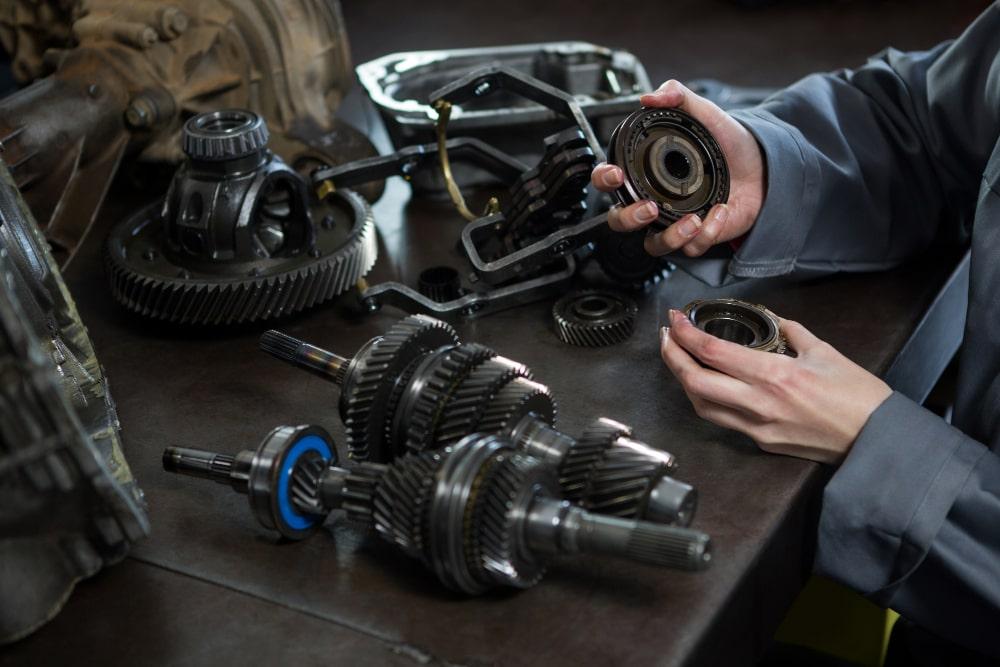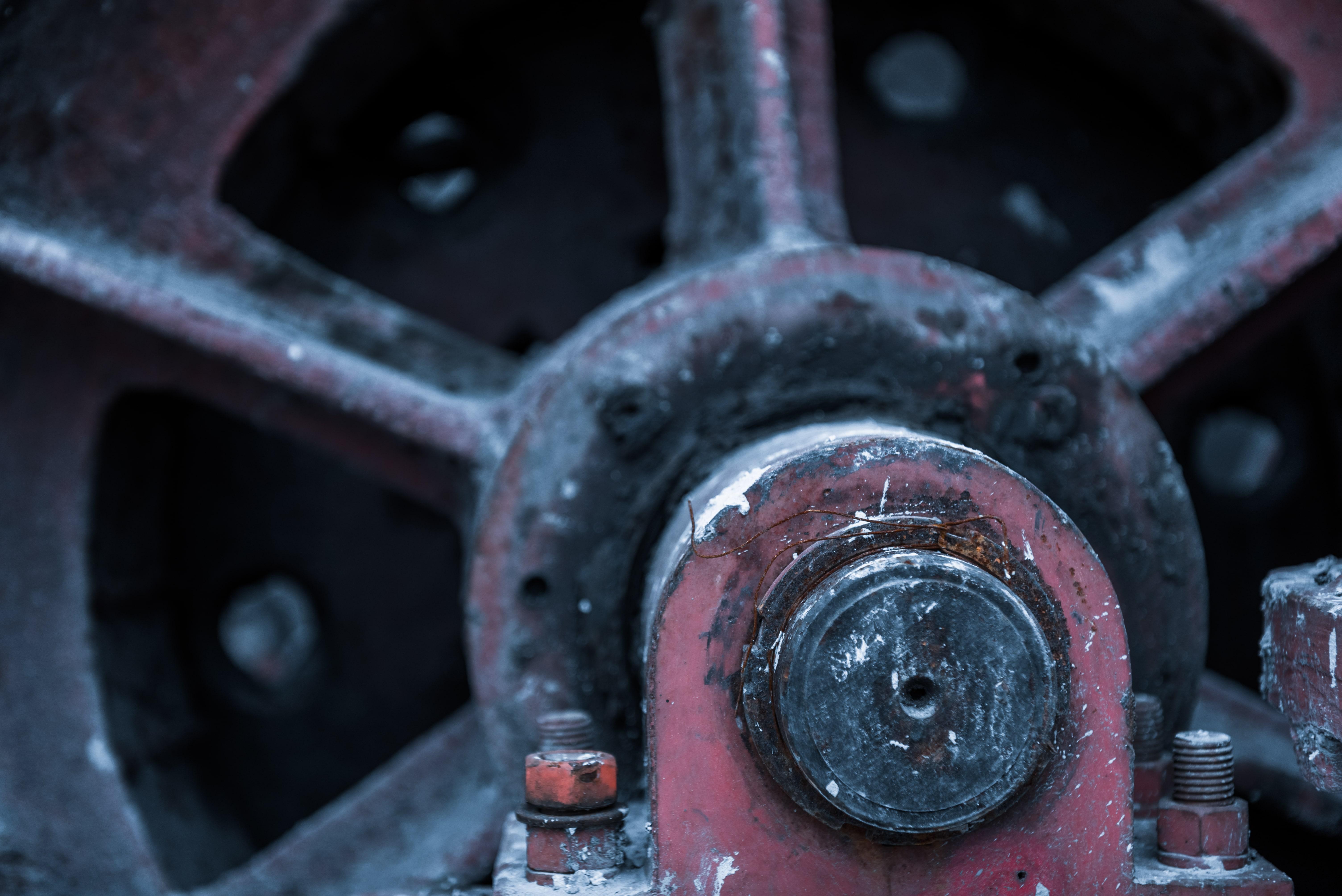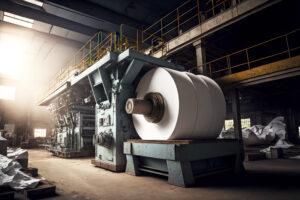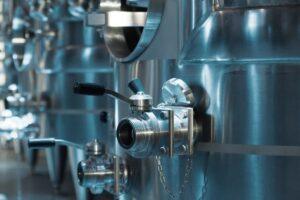
Nothing among machine elements is more complicated and vital for proper functioning than a gearbox service. Gearboxes are mostly found in every application, be it heavy-duty manufacturing or very precise automation. Each has its design intended for a specific application. So, with such a variety in availability, how would you choose the perfect one? This guide gives some information on the different types of modern industrial gearboxes, the unique advantages of each type, and helpful advice for making optimum decisions regarding improved efficiency, reliability, and performance for your application.
What Is an Industrial Gearbox?
An industrial gearbox is defined as a mechanical device through which a torque produced by a motor is used to pull a load or machine, and whose speed is divided by this ratio. In systems like conveyors, crushers, turbines, and mixers, the gearbox plays a vital role in transferring power from one equipment to another. In addition to improving performance conditions, the kind of gearbox used always considers energy-efficient operation, serves simple maintenance, and prolongs operational lifetime.
The wrong type of gearbox may lead to undesirable wear and tear, overheating, and even system failure; on the other hand, the right gearbox guarantees smooth operation under very tough conditions. This is simply because these gearboxes have been designed for specific loads, environments, and types of speed. That is why it is very important to understand how gearboxes function like any other mechanical component in a machine. For example, the right gearbox would ensure power continuity in highly precise automation and industrial processing that involves very heavy-duty load operations.

Main Types of Industrial Gearboxes
Gearbox manufacturers suggest many designs for industrial gearboxes, each one tailored to specific mechanical needs. The type of gearbox selected can largely affect the efficiency, durability, and smooth operation of a system. Here are descriptions of five types of gearboxes in industries, most commonly in use in the industry, each with an added comment about what differentiates each type and its usual application.
Helical Gearbox
Helical gearboxes are considered to be one of the most reliable and widely used in heavy-duty applications. Helical gear teeth are set at angles, which makes tooth engagements occur gradually, ensuring smooth and quiet operation. High-torque transmission, low vibrations, and high load-bearing capacity recommend their use in cement plants, steel rolling mills, and plastic extrusion machinery.
Bevel Gearbox
When the need arises to alter a shaft’s direction, a bevel gearbox is usually the first thought. Using conical gears with intersecting shafts mounted typically at right angles, they can efficiently transmit motion from one shaft to another in a compact design. Bevel gearboxes are commonly used in conveyors, mining machinery, and other systems for material handling.
Worm Gearbox
The worm gearbox, compact and powerful, is appreciated for its application where space is at a premium and high torque is required at low speed. It works using a screw-like worm that meshes with the gear, often with a self-locking mechanism. This gearbox also has a smooth and quiet operation, making it best suited for elevators, small conveyors, and packaging machinery.
Planetary Gearbox
With small dimensions to cover high precision and high torque, planetary types of gearboxes in industries are generally the first choice. It consists of a central sun gear surrounded by planet gears, which are enclosed by a ring gear. This allows for an even distribution of load, increased stability, and high efficiency. Common applications for planetary electric motor gearboxes are found in robotic systems, aerospace systems, and printing presses.
Spur Gearbox
Finally, spur-type gearboxes are a simple, low-cost solution for applications requiring low to medium torque. These employ teeth that are straight and aligned parallel to the axis of rotation, allowing for fast operation, but, under load, they will generally create a lot of noise. Spur gearboxes are often found in conveyor systems, automotive mechanisms, and gear pumps for which simplicity and speed are paramount.

Key Factors to Consider When Choosing a Gearbox
Know what your application needs and the specific technical requirements for each gear type to choose the best-suited gearbox. A good match between the gearbox and application can improve operations, efficiency, and maintenance costs over time. With numerous types on offer — each of which provides different advantages — it is extremely important to consider operating conditions, load conditions, and limitations of the layout. Whether it is a new design or modification to an old one, taking time to weigh options can spare an organization the pain of expensive mistakes and shutdowns. Here are some aspects to weigh:
Torque Requirements
Know the amount of torque your application demands. Underestimating the torque can lead to failures and early wear. Average torque is not all that is important; you must also consider peak loads and surges at startup. Oversizing slightly will make it last longer, while undersizing will lead almost invariably to early breakdown. Always consult the manufacturer’s torque curves for matching correctly. Torque has to take in the duty cycle — whether continuous, intermittent, or shock-loaded. Some gearboxes are specifically made to cater to very different torque loads, with a very slight backlash. Be careful about over-specifying, also — an oversized gearbox wastes energy and space, whereas not offer any advantage.
Speed Ratio
Identify the suitable input-to-output speed ratio required. Such gearboxes are more suitable for high-speed reduction than others. Worm box is perfect for high ratio reductions in a single stage, while planetary ones give their ratios with better efficiency. Ensure a similar speed will lead to consistent performance and help maintain optimal power transmission.
Be sure to analyze how the speed ratio affects your system’s driving speed range and response time. Some gearboxes may be flexible or modular in design, allowing for later ratio changes. Keeping in mind the load and speed of the motor for changes in the desired gear ratio over time are important. The right ratio also means everything in terms of wear and lubrication conditions within the gearbox.
Space Constraints
Take into consideration the installation space available. Compact installation designs are often satisfied with planetary and worm gearbox types. When space is at a premium, a gearbox that delivers increased power for its size can help achieve better design flexibility. In the design of the installation, remember to evaluate the gearbox footprint, but also the access to cooling and maintenance.
Consider three-dimensional thinking — vertical and horizontal clearances would also govern the best arrangement. While compact, it does not necessarily lean toward lightweight when structural support may still be needed. Often, smaller types of gearbox in industry may tend to shift the center of gravity of the system lower for mobile equipment or robotics. Mounting orientation also influences space usage and must be under application specifications.
Efficiency and Energy Consumption
Generally, helical and planetary gearboxes are more efficient than worm gearboxes, and therefore use less energy over time. Use worm gearboxes where size is a premium, but usually at high ratios, they perform poorly in efficiency. Over an extended period, the efficiency of even a few percentage points can add up to saved energy costs. When energy consumption matters, choose gear types with the lowest power losses.
Moreover, the efficiency of the gearbox corresponds to a generation of less heat; thus, it reduces the cost of cooling and prolongs the life of the lubricant. It has been found that the hidden cost of gearbox losses in industrial energy audits is often one of the most important cost items. In the case of using variable speed drives, consider inverter-friendly types of gearboxes. Some designs also reduce friction losses using advanced materials or surface treatments.

Maintenance and Durability
Opt for a gearbox that has proven durability and low maintenance in rigorous or continuous-use environments. Gearboxes used in dusty, wet, or high-vibration settings need tough seals, high-performance lubricants, and sturdy hosing. Consider the ease of accessibility and replacement parts for lubrication points. Lubricate gearboxes with long service intervals or that are self-lubricated; therefore, downtime is less, and less money is spent.
Such industries as food processing or mining require certain certifications and maybe even corrosion-resistant materials. Also, shock-resistant housing and overload protection can prolong the gearbox’s life in heavy-duty applications. Look for design aspects such as breather plugs, inspection ports, or drain valves. Routine condition monitoring, i.e., vibration or oil analysis, can go in advanced models and at more advanced stages.
Orientation and Shaft Arrangement
Depends on the direction of force and shaft alignment, as in some cases, the options are limited (for example, bevel gearboxes for shafts at right angles). Some offer a variety of mounting positions, while others are more specific. Misalignment may cause premature wear, vibration, or failure of the system. Always align the gearbox orientation relative to the overall mechanical configuration.
Define the space and load paths early, as inline and right-angle gearboxes require very different layout solutions. Flexible shaft position gearboxes, such as hollow or double shafts, offer even more options for integrating their design. Use alignment tools or couplings to ensure optimal connection with motors and driven equipment. The same applies to inadequate orientation of locomotion that interferes with internal flow paths, with the installation plan for lubrication.
Cost vs. Performance
Your budget should balance with performance and reliability. In some cases, a slightly higher price is worth the investment for decreased downtime. Look at the total cost of ownership and not just the upfront price — energy consumption, maintenance, and expected life should be included. When you invest in a quality product, fewer failures may mean greater productivity and a longer system life.
Warranty duration, technical support, and delivery lead times should also be considered. For mission-critical systems, the failure cost far exceeds initial savings. Some of the gearboxes may also provide modular add-ons such as encoders or cooling fans, which can improve performance without changing the core unit. Carry out a risk-benefit analysis concerning your applications’ criticality and the costs incurred due to downtime.
Final Thoughts
Industrial gearboxes will seem as if they are just little bits in the puzzle of machinery, but they have a penalty that weighs greatly on productivity, efficiency, and reliability. Understanding the kind of difference that gearbox types can have and knowing which one matches your various operational needs will mean the difference between success and failure in the long term. Selecting a new system from the prominent industrial gearbox manufacturers or taking old pieces and putting them into new systems, you will save time, money, and stress in the future by selecting wisely.










